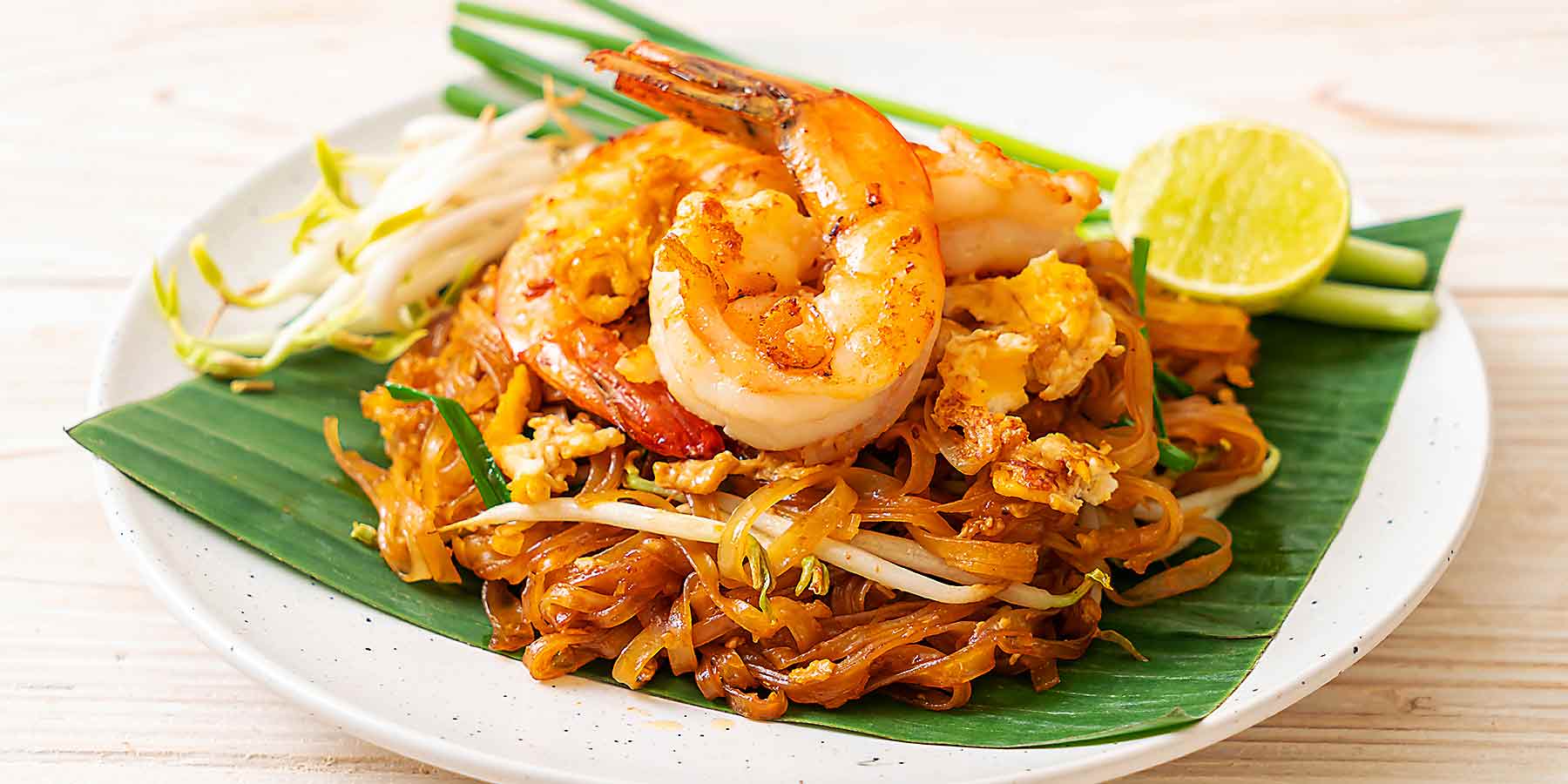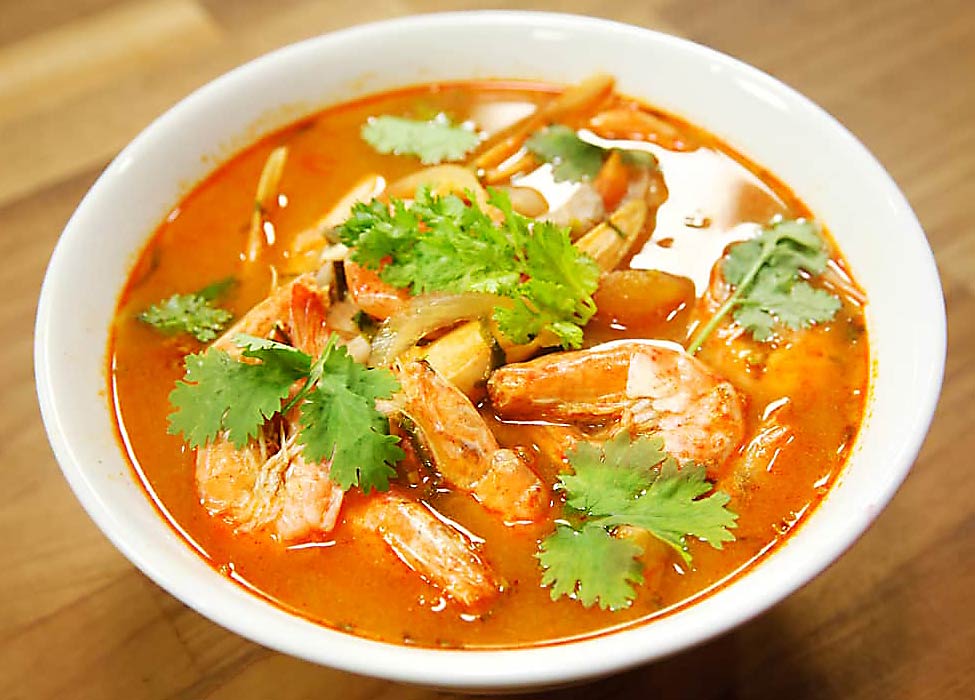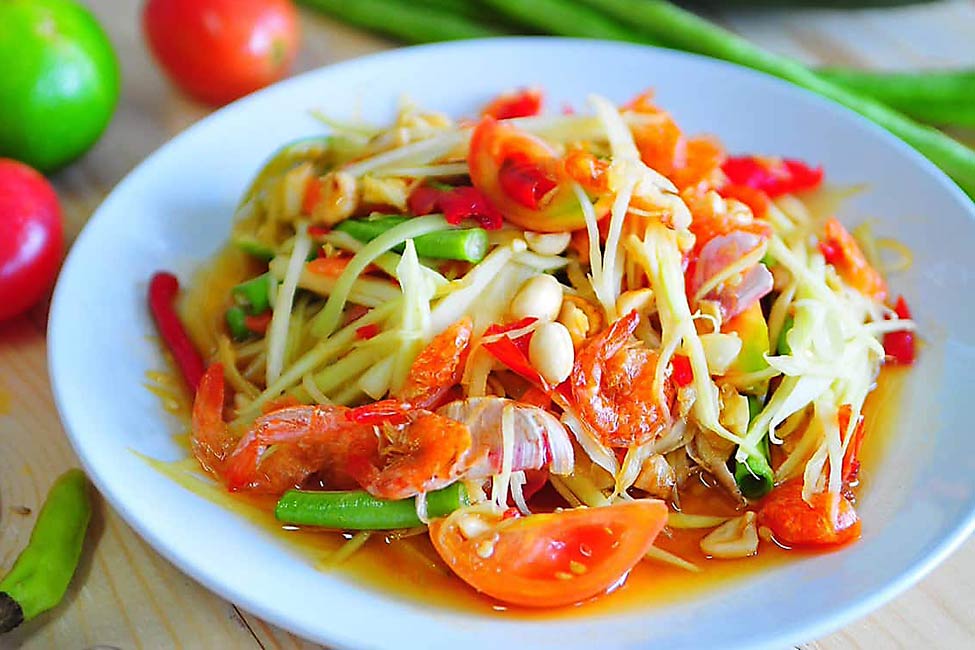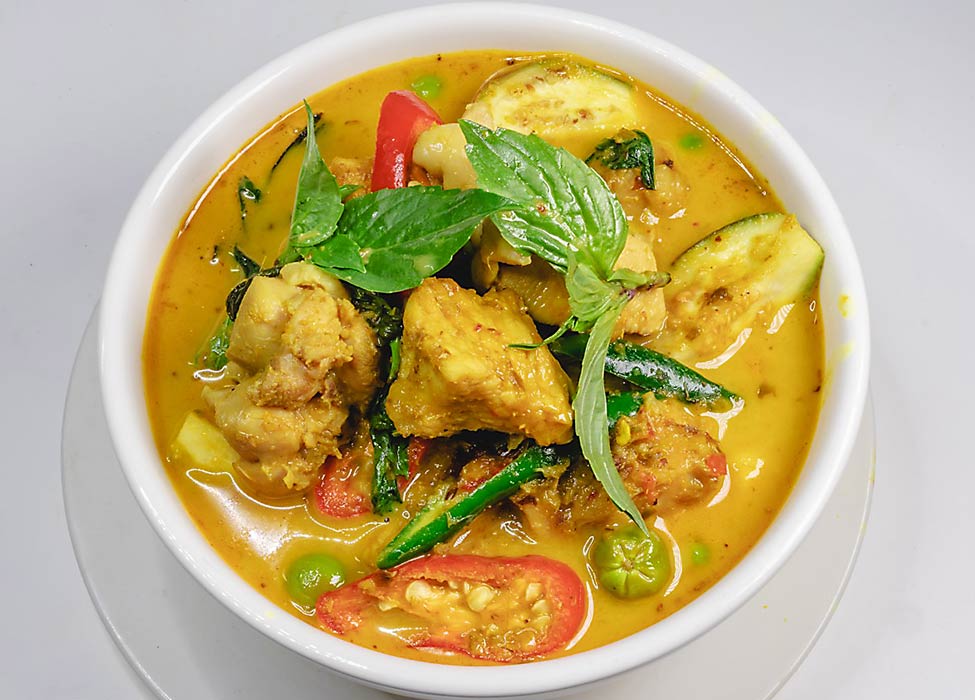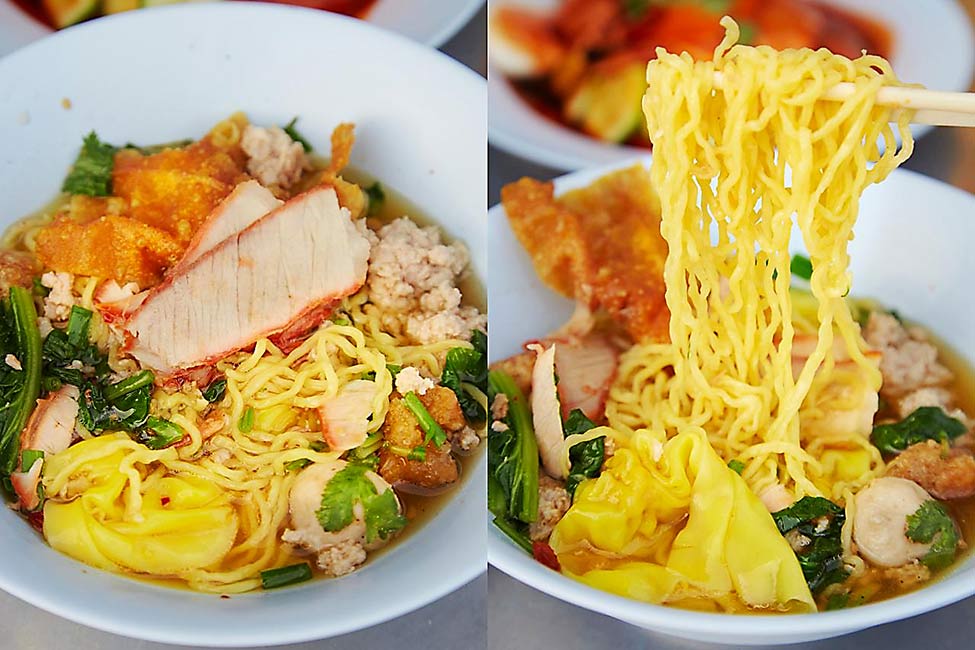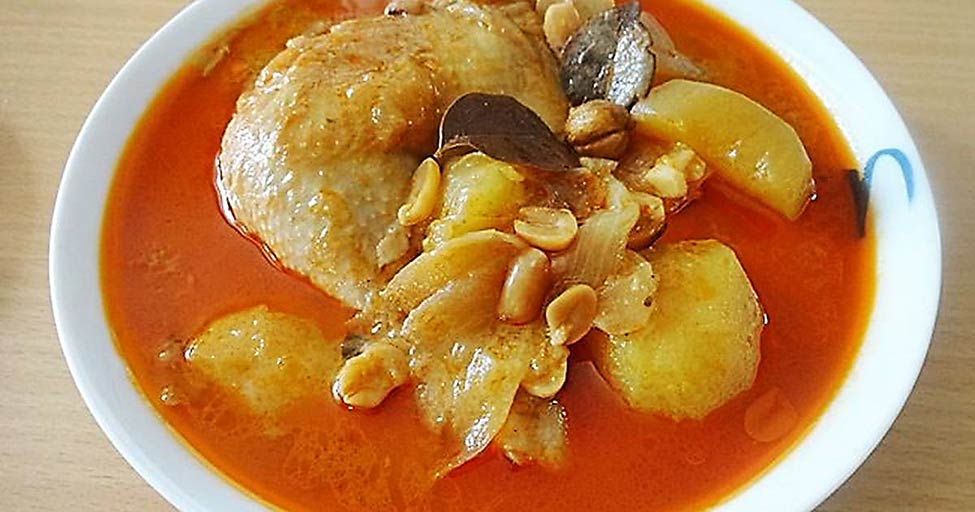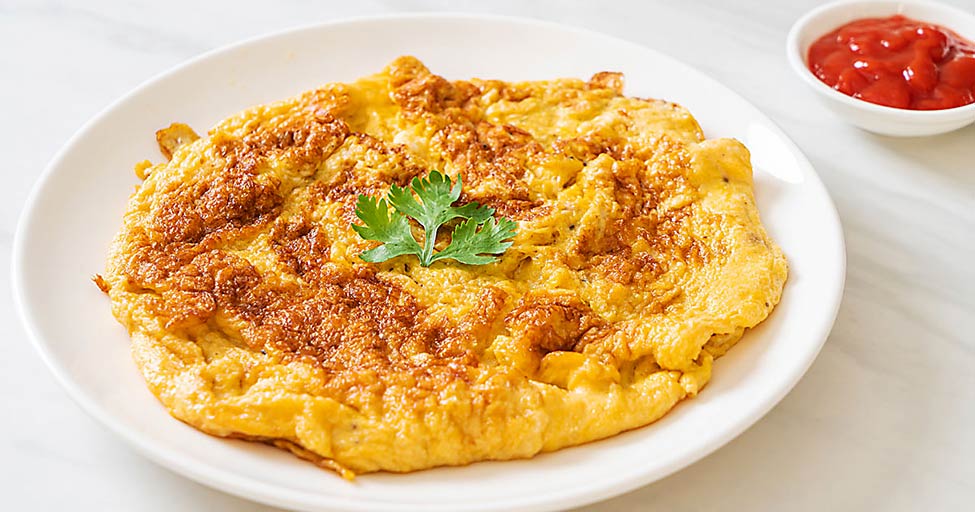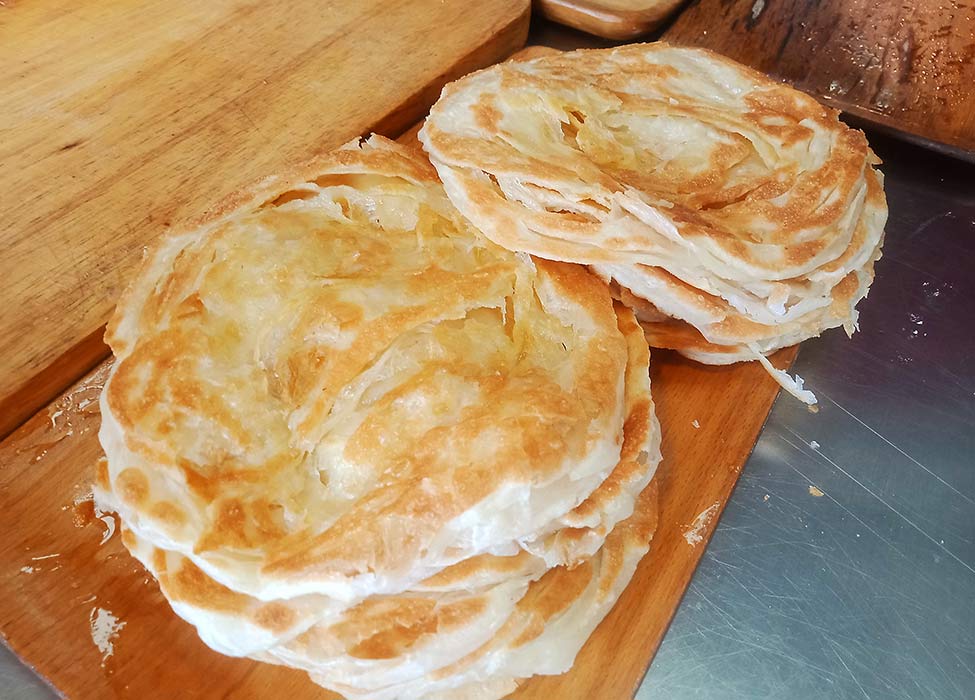Exploring Thai cuisine is like embarking on a culinary adventure through the vibrant streets of Bangkok. Each dish tells a captivating tale of tradition and flavour, showcasing the rich history and culture that have influenced its creation. The diverse range of dishes found in Bangkok’s top restaurants and street vendors offers an explosion of tastes that cater to every palate. The bold flavours and colourful presentations are a true reflection of the Thai people’s deep-rooted pride in their food heritage. Whether you’re indulging in a plate of flavorful pad thai or savouring a bowl of fragrant tom yum soup, each bite is an experience worth savouring. Immerse yourself in the bustling markets of Yaowarat or Chinatown to discover where locals go for authentic eats served with love by talented chefs who know how to capture the essence of Thailand on your plate. Don’t miss out on trying some crispy fried favourites like satay skewers or tangy shrimp dishes that will leave you craving more. In Bangkok, every meal is not just about eating; it’s about embracing a culinary tradition that has been passed down through generations, so dive into this world-renowned food scene and taste what makes Thai cuisine truly unforgettable.Bangkok’s food scene transcends the realm of mere street food. The city stands as a culinary haven, boasting an array of dining options that span from hidden treasures tucked away in narrow alleyways to Michelin-starred establishments. Have you had the pleasure of savouring the delectable delights of khao tom or boat noodles? These dishes merely scratch the surface of Bangkok’s unique and mouthwatering offerings.
When you embark on a culinary journey through the bustling streets of Bangkok, come prepared with an empty stomach and an adventurous spirit. Give yourself the gift of time to savour the mouthwatering flavours and immerse yourself in the vibrant food culture. If you feel overwhelmed by the array of options, consider joining a guided food tour that will take you to some of the city’s most acclaimed dining establishments. Rest assured, Bangkok’s diverse gastronomic landscape promises an exciting adventure that will tantalise your taste buds and leave you craving more.
Essential Dishes to Savour
When immersing yourself in the vibrant culinary scene of Bangkok, there are certain dishes that truly capture the essence of Thai cuisine. Here is an in-depth exploration of the must-try foods that showcase the rich flavours and traditions of this food paradise:
| Dish | Description | Recommended Locations |
|---|---|---|
| Pad Thai | A classic stir-fried noodle dish with shrimp, tofu, peanuts, and bean sprouts, garnished with lime. | Thip Samai, known for its authentic preparation. |
| Tom Yum Goong | A fragrant and spicy soup made with shrimp, lemongrass, kaffir lime leaves, and chilli. | Tom Yum Goong Banglamphu, famous for its traditional taste. |
| Som Tum | A vibrant green papaya salad combining lime, fish sauce, and chilli for a zesty kick. | Som Tum Nua, a local favourite for this refreshing dish. |
| Massaman Curry | A rich, mildly spicy curry featuring beef, potatoes, and peanuts, influenced by Persian cuisine. | Raan Jay Fai, a Michelin-starred street food vendor. |
| Khao Soi | A Northern Thai coconut curry noodle soup topped with crispy noodles and served with lime. | Khao Soi Mae Sai, known for its authentic flavours. |
| Mango Sticky Rice | A popular dessert made with glutinous rice, fresh mango, and coconut milk. | Mae Varee, famous for its delicious version. |
Local Eateries to Discover
Bangkok’s dining scene is as diverse as its culture. Here are some local gems that highlight the culinary richness of the city:
| Eatery | Description |
|---|---|
| Jay Fai | An iconic street food vendor celebrated for her crab omelette, earning a Michelin star for her exceptional dishes. |
| Raan Jay Fai | A must-visit for food enthusiasts, offering a unique twist on traditional recipes. |
| Chinatown (Yaowarat) | A lively area filled with street food vendors serving grilled seafood, sweet desserts, and more. Perfect for a culinary adventure. |
| Bangrak Market | A bustling market where you can sample a variety of local delicacies and fresh produce, providing an authentic taste of the city. |
| Suan Lum Night Bazaar | A vibrant night market with a variety of food stalls, shops, and entertainment options. |
Tom Yum Goong
When you take your first spoonful of this fiery soup, an explosion of flavours will hit your taste buds. The tangy, sour notes of the lemongrass and kaffir lime leaves mingle with the rich, earthy taste of galangal, creating a fragrant and refreshing broth. The shrimp adds a burst of umami flavour, while the sting of heat from the chillies lingers on the tongue. With each bite, you’ll discover new layers of taste and texture. Tom yum goong is an unforgettable experience for your palate.
But this soup isn’t just delicious; it’s also rooted in Thai culture and history. Legend has it that a resourceful woman created tom yum goong to fight the hot and humid Bangkok climate. She combined local ingredients, such as seafood, with her own unique blend of spices and herbs to create a soup that would cool people down while firing them up. Today, this iconic dish remains a beloved staple of Thai cuisine, enjoyed not just in Bangkok but throughout the country.
Despite its popularity, there is no one-size-fits-all recipe for tom yum goong. Every restaurant, street stall, and home cook has their own take on this dish, and you’ll find that no two versions are the same. Some may use more or fewer chillies, while others might add extra herbs like coriander or basil. But no matter where you try it, you can expect a flavourful and satisfying meal that will leave you wanting more.
If you’re looking to try tom yum goong in Bangkok, head to a local eatery or street stall. Don’t be afraid to ask for recommendations and be sure to try a few different versions to find your favourite. And if you’re feeling brave, ask for extra chillies to turn up the heat.
Pad Thai
Pad thai can only be described as culinary bliss. They perfectly cook the noodles to a tender yet chewy texture and then coat them in a tangy and sweet tamarind sauce, with just a hint of saltiness. The sauce becomes even more complex with the addition of fresh lime juice, chillies, and fish sauce, creating a symphony of flavours.
But the real star of pad thai is the crushed peanuts that are generously sprinkled over the top of the dish. They add a satisfying crunch and nutty richness that perfectly complements the soft noodles and zesty sauce. And let’s not forget the fresh herbs, like cilantro and green onions, that add a burst of freshness to every bite.
Despite its seemingly simple appearance, a well-made pad thai is a masterpiece of Thai cooking. Each ingredient balances with others to create a harmonious dish that’s beloved around the world. And in Bangkok, every restaurant offers its own unique twist on this classic dish. So, there’s always something new and exciting to try.
But the magic of pad thai isn’t just in its taste; it’s in the experience of enjoying it on the streets of Bangkok. Picture yourself sitting at a small plastic table on a busy street corner, surrounded by the sounds of tuk-tuks and sizzling woks. The steam rising from your hot plate of pad thai mingles with the scent of herbs and spices, filling the air with an intoxicating aroma.
So if you’re in Bangkok, don’t miss the chance to indulge in this classic dish. But no matter where you try it, you’ll be blown away by the complexity and depth of this world-famous dish.
Som Tam
Som tam is not just any salad – it’s a symphony of flavours. Imagine the crisp crunch of shredded green papaya, the creamy richness of crushed peanuts, and the juicy burst of ripe cherry tomatoes, all harmonising in your mouth with the tangy and spicy dressing. It’s a dish that demands attention. But its bold and audacious flavours are not for the faint-hearted. And yet, it’s a favourite among those who appreciate its complexity. One bite and you’ll feel like you’ve been transported to the streets of Bangkok, surrounded by vendors and the tantalising aroma of street food. Don’t let its simple appearance fool you – som tam is a testament to the creativity and skill of the chef, who can turn a humble papaya into a masterpiece.
Green Curry
Green curry reigns supreme among Thai curries, and for good reason. The luminous green hue is as captivating as the flavours. Its creamy coconut milk base imbues a gentle sweetness, while the tantalising blend of herbs and spices adds a complexity that is uniquely Thai. Fragrant lemongrass, pungent galangal, and fiery bird’s eye chillies mingle to create a symphony of taste sensations. And let’s not forget about the star of the show – tender morsels of meat or vegetables that soak up all that flavour.
A staple of Bangkok’s culinary scene, green curry is a dish you simply cannot miss. But beware, restaurants can vary widely in the spiciness of their green curry. To ensure you get the perfect level of heat, ask your server about the heat level before ordering. Just keep in mind, Thai people are used to the heat, so what’s mild for them can easily be too hot for tourists. For those who crave heat, green curry is crucial when visiting Bangkok. And if you’re looking for the absolute best places to sample this exquisite dish, head to local favourites like Khao Soi Islam or Khao Gaeng Jake Puey, where the curries are legendary.
Bamee Moo Daeng (Egg Noodles with Roast Pork)
This comforting dish is a staple in Bangkok, enjoyed by locals at any time of day. It’s common to see it eaten for breakfast, lunch, or dinner, and it’s a key part of the city’s food culture. The broth is rich and savoury, with a complex flavour profile enhanced by aromatic spices and herbs. Each spoonful contains tender slices of succulent roasted pork, creating a hearty meal.
While it may seem like a simple dish, the balance of flavours and textures is what makes it special. Each component adds something unique, creating a symphony of taste. To find the best versions of this dish, look for small, family-run shops or street food stalls that specialise in it. These hidden gems often offer the most authentic and delicious versions of the dish.
Khao Kha Moo (Braised Pork Leg with Rice)
Khao kha moo, or braised pork leg over rice, is a favourite dish among locals. Slow cooking results in succulent meat that falls off the bone. The combination of cinnamon, star anise, garlic, and soy sauce in the broth creates a complex and irresistible flavour. Served over a bed of steamed rice, the tender pork soaks up the broth perfectly. Add a boiled egg and pickled vegetables for a zesty and tangy kick that takes the dish to the next level. Whether you’re in a hurry or looking for a comforting meal, khao kha moo is hearty and satisfying. Look for it at street food vendors throughout Bangkok, where you can find different variations and flavour combinations. Try it with the best accompaniments, such as a cold beer or a side of spicy papaya salad.
Massaman Curry
Massaman curry reflects the fusion of Indian, Malay, and Thai flavours, making it a reflection of Thailand’s history. This hearty and comforting dish is perfect for cooler weather or when you’re in the mood for comfort food. The rich, creamy sauce consists of coconut milk, combined with fragrant spices like cinnamon, star anise, and cardamom. The tender meat, potatoes, and crunchy peanuts make each bite an indulgent delight for your senses. This is not your typical spicy curry, but an introduction to Thai cuisine for those who are hesitant to try fiery dishes.
Originating in southern Thailand, they usually make Massaman curry with beef or lamb, which is best enjoyed with steamed rice. In some parts of the country, it’s also served with crispy roti bread, which is perfect for dipping into the fragrant sauce. The secret of the distinct flavour is in the blend of spices. Each spice blends in to create the perfect balance of taste and aroma.
Kai Jeow
Kai jeow, a humble Thai street food, is anything but ordinary. This dish may not have fancy ingredients, but it packs a delicious punch. As you bite into the crispy outer layer of the omelette, the satisfying crunch gives way to a fluffy and savoury centre infused with fish sauce. Adding vegetables or meat adds depth to the dish, while the chilli sauce gives it a fiery kick. Kai jeow is not only affordable, but it’s also a convenient option for a quick meal on the go.
Check out Bangkok’s street food scene and discover the enticing aroma of Thai spices wafting through the air. The lively sounds of vendors calling out to customers and sizzling pans of food cooking will fire up your senses. Amongst all the options, kai jeow stands out. Its simple yet satisfying flavours have made it a staple of Bangkok’s street food culture.
Khao Mun Gai
Khao mun gai captures the essence of Thai cuisine: simple, yet perfectly balanced. This unassuming dish is proof that great food doesn’t need to be complicated or expensive. The fragrant rice fuses with the flavour of chicken broth. They cook the chicken with great care to achieve a tender, succulent texture that bursts with flavour. The accompanying sauce is the star of the show. Its impeccable balance of salty, sweet, and sour notes creates a symphony of flavours in every bite.
Savouring khao mun gai on the streets of Bangkok is an experience like no other. The aroma of cooking food fills the air, mingling with the sound of sizzling woks and chatter. Khao mun gai stands out among street food. Each variation of the dish offers a different twist, from the spicy kick of chilli sauce to the cool, refreshing crunch of cucumber.
Roti
Roti is a beloved dessert in Thailand that combines the best of Indian and Thai cuisine. The vendor makes the warm, flaky flatbread with a mix of flour, milk, and sugar and cooks it to a perfect golden brown on a hot griddle. As you watch the vendor expertly stretch and flip the dough, the aroma of toasted coconut and sweet condensed milk fills the air. While the roti cooks, they add the filling. Roti can have anything from traditional bananas and chocolate to unconventional options like ham and cheese. Each bite is a perfect balance of sweet and savoury, with a satisfying crunch from the crispy roti.
While the origins of roti in Thailand are unclear, it’s believed that Indian traders brought the dish over in the 19th century. Over time, they have adapted the recipe to suit Thai tastes and ingredients, resulting in a unique variation that’s now a staple of street food culture. In southern Thailand, for example, they often serve the dish with a spicy curry sauce, while in Bangkok, vendors may add pandan leaves or sesame seeds to the dough for extra flavour.
Despite its popularity, roti continues to evolve with the times. Some vendors now offer unconventional fillings like Nutella and condensed milk. Others have introduced savoury options like corn and cheese. But no matter how it’s served, roti remains a testament to the cultural fusion that makes Thai cuisine so exciting. Roti is extremely popular among Muslims in Thailand. Vendors often have a crescent moon and star on their stall signage, which makes them easy to spot.
Regional Influences on Bangkok’s Cuisine
Bangkok brings together the best of Thailand’s regions and neighbouring cultures. Each area contributes something unique to the city’s food scene:
| Region | Key Dish | Influence |
|---|---|---|
| North | Khao Soi (coconut curry noodle soup) | Burmese-inspired, creamy with curry and crispy noodles. |
| Northeast (Isaan) | Som Tum, Grilled Chicken, Sticky Rice | Bold, spicy, and tangy flavours loved across Bangkok. |
| South | Yellow Curry, Massaman Curry | Malay-Muslim roots, rich with coconut milk and turmeric. |
| Central | Pad Thai, Tom Yum Goong | Bangkok’s signature dishes with balanced sweet-sour-spicy notes. |
| Chinese Influence | Roast Duck, Congee, Stir-fried Noodles | Brought by Chinese immigrants; now core Bangkok staples. |
Tip: Try roaming areas like Victory Monument for northern-style noodles, or Silom for authentic Isaan grills.
Drinks and Desserts to Complete the Experience
Round out your Bangkok food journey with refreshing drinks and iconic Thai sweets:
Popular Drinks
Thai Iced Tea (Cha Yen): Sweet, creamy, and cooling.
Coconut Water: Served in fresh coconuts, perfect for hot days.
Nam Manao: A zesty lime soda balancing spicy meals.
Thai Coffee (Oliang): Strong, dark brew often mixed with condensed milk.
Must-Try Desserts
Mango Sticky Rice: Glutinous rice topped with ripe mango and coconut cream.
Luk Chup: Tiny fruit-shaped sweets made from mung beans.
Khanom Buang: Crispy pancakes filled with cream and shredded coconut.
Tub Tim Grob: Water chestnuts in coconut milk with crushed ice.
Roti with Condensed Milk: Sweet, flaky flatbread with endless variations.
👉 Where to Find Them:
Mae Varee (Thonglor): Famous for mango sticky rice.
Yaowarat Road (Chinatown): Endless dessert stalls and coconut ice cream vendors.
Chatuchak Market: Great variety of Thai iced teas and fresh tropical fruit treats.
Tips for Navigating Bangkok’s Food Scene
Exploring Bangkok’s culinary landscape can be exhilarating. Here are essential tips to enhance your food journey through Bangkok’s food offerings:
- Embrace Street Food: Don’t hesitate to try street food; it’s often where you’ll find the most authentic flavours. Look for busy stalls with long lines, as they usually indicate quality and freshness.
- Learn Basic Thai Phrases: Knowing a few key phrases can enhance your interactions with vendors and locals. Simple greetings and expressions of gratitude go a long way.
- Be Adventurous: Be open to trying new dishes and flavours. Thai cuisine is diverse, and you might discover a new favourite!
- Stay Hydrated: The tropical climate can be hot and humid, so drink plenty of water, especially if you’re sampling spicy dishes.
- Use Food Apps: Consider using apps like Grab or Foodpanda for delivery options, or to find nearby eateries with good reviews.
- Join a Food Tour: If you’re unsure where to start, consider joining a food tour. Local guides can introduce you to hidden gems and provide insights into the dishes.
Pros and Cons of Dining in Bangkok
Exploring the perks and hurdles of dining in Bangkok can truly enhance your culinary journey in this dynamic city.
| Pros | Cons |
|---|---|
| Wide variety of dishes and flavours | Can be overwhelming for first-time visitors |
| Affordable prices, especially street food | Quality can vary between vendors |
| Rich cultural experiences through food | Language barriers may complicate ordering |
| Access to fresh and local ingredients | Hygiene standards may vary |
Must-Visit Food Markets
When it comes to experiencing the vibrant food scene in Bangkok, you can’t miss out on exploring the city’s bustling food markets. In addition to the plethora of street vendors and restaurants, Bangkok is home to some of the best markets where you can indulge in a wide array of delicious Thai dishes and local delicacies. Here are some top market recommendations for those looking to dive into Bangkok’s culinary culture:
| Market Name | Location | Highlights |
|---|---|---|
| Chatuchak Weekend Market | Chatuchak, Bangkok | Over 15,000 stalls, including food vendors offering traditional Thai dishes and international cuisine. |
| Or Tor Kor Market | Chatuchak, Bangkok | Known for its high-quality fresh produce, meats, and prepared foods, a favourite among locals. |
| Suan Lum Night Bazaar | Ratchadaphisek Road, Bangkok | A lively night market with a variety of food stalls, shops, and entertainment options. |
| Bangkok Farmers’ Market | Various locations | Focuses on organic and locally sourced products, with food stalls offering healthy and delicious options. |
| Khlong Toei Market | Khlong Toei, Bangkok | One of the largest fresh markets in Bangkok, offering a wide range of local produce and street food. |
Hidden Food Experiences in Bangkok
If you’ve already savoured the delights of pad thai and tom yum, it’s time to immerse yourself in the vibrant food scene of Bangkok. Some of the city’s most delectable dishes can’t be found on traditional menus; they’re tucked away in alleyways, side streets, or hidden gems known only to locals.
Morning Markets: Wake up early and head to a wet market. You’ll see vendors selling steaming bowls of jok (Thai rice porridge) and fresh soy milk with fried dough sticks. It’s a breakfast ritual you won’t forget.
Boat Noodles at Victory Monument: Served in small bowls with a rich, dark broth, these noodles were once handed from boats along Bangkok’s canals. Order several bowls; locals rarely stop at just one.
Late-Night BBQ Stalls: Around Sukhumvit and Silom, you’ll find pop-up grills after midnight. Pork skewers, grilled fish, and spicy dipping sauces keep the nightlife crowd fuelled until sunrise.
Community Temples: During festivals, temple grounds often host food fairs where families sell homemade regional dishes. It’s the most authentic (and affordable) way to taste the food Thai people grew up with.
Floating Markets: Places like Taling Chan or Damnoen Saduak offer a taste of Bangkok’s riverside roots. Vendors cook from their boats, serving noodle soups, grilled seafood, and coconut desserts.
Tip: When in Bangkok, skip the crowded tourist traps and seek out hidden gems like Khlong Lat Mayom for a more authentic culinary experience. This lesser-known market offers a true taste of Thai street foods served up by local vendors, making it a must-visit for food enthusiasts looking to try the best dishes that Thailand has to offer. Don’t miss out on the flavorful seafood, tangy curries, crispy fried chicken, and delicious pad thai that are sure to satisfy your cravings for traditional Thai flavours. So if you’re looking for an unforgettable dining experience off the beaten path, make sure to add Khlong Lat Mayom to your list of top places to eat in Bangkok.
Conclusion
Exploring Bangkok’s culinary scene is an adventure for the senses, where every dish tells a story of Thailand’s rich cultural tapestry. Imagine biting into som tam salad—a tangy, spicy delight with roots in Laos yet cherished across Thailand—or savouring Massaman curry, a harmonious blend of Indian and Muslim influences. In this vibrant city, each bite unveils layers of tradition and innovation. Whether you’re enjoying steaming tom yum soup from street vendors or indulging in crispy pla rad prik at Michelin-starred eateries, Bangkok offers endless delights to satisfy any palate. Wander through Silom or Siam Square for locals’ favourite curries and noodles; dive into Chinatown’s bustling markets brimming with fresh ingredients; or savour street foods like satay skewers on Yaowarat Road. In Bangkok, every meal is a thrilling journey—don’t miss out on this food lover’s paradise!
When immersing yourself in Bangkok’s vibrant street food culture, be prepared to awaken all your senses. The enticing aroma of grilled meats and zesty sauces wafts through the air, while the symphony of sizzling woks and bubbling broths creates a lively atmosphere. In addition to classic dishes like pad thai,, you’ll discover an array of tantalising treats such as crispy fried quail eggs and exotic fruits like mangosteen and rambutan. Local food enthusiasts are eager to share their rich culinary heritage with you, offering insights into the unique ingredients and traditional cooking techniques that make each dish truly exceptional.
Final Thoughts
Bangkok’s culinary scene is a vibrant tapestry of Thai flavours, traditions, and experiences waiting to be explored. Whether you’re indulging in street food or dining at a high-end restaurant, the city’s food culture offers something for everyone. By embracing the local cuisine and engaging with vendors, you can create unforgettable memories and truly immerse yourself in the heart of Thailand’s capital.
Summary of Key Takeaways
- Must-Try Dishes: Pad Thai, Tom Yum Goong, Som Tum, Massaman Curry, Khao Soi, Mango Sticky Rice.
- Local Eateries: Jay Fai, Raan Jay Fai, Chinatown, Bangrak Market, Suan Lum Night Bazaar.
- Tips: Embrace street food, learn basic Thai phrases, be adventurous, stay hydrated, use food apps, and consider food tours.
- Markets: Chatuchak Weekend Market, Or Tor Kor Market, Suan Lum Night Bazaar, Bangkok Farmers’ Market, Khlong Toei Market.
So grab your appetite and get ready to embark on a delicious journey through the streets of Bangkok!

